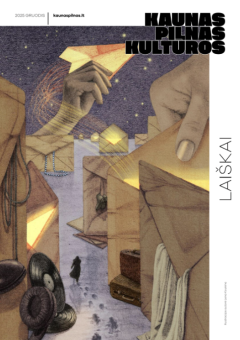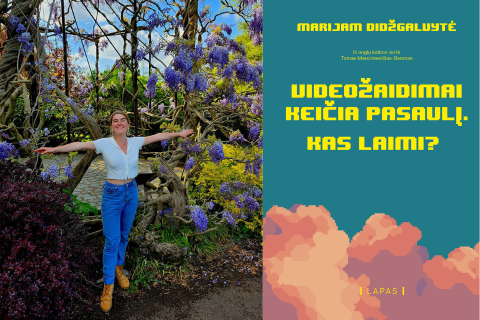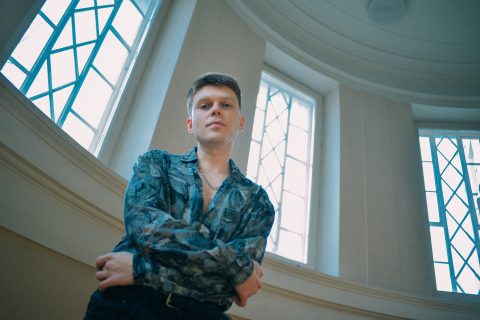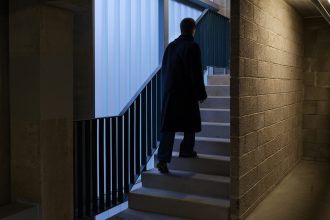In December 2018, Aistė Ambrazevičiūtė illustrated our magazine issue themed Peace. Looking at its content now, it seems we were a bit naive, but the illustration – resembling a hybrid of camouflage fabric and a tactical map – has not aged a bit. That was the first time we explored Aistė’s virtual laboratory, Plantasia Lab. The Kaunas-born artist, who holds a degree in architecture, became a Doctor of Arts at the end of 2024, after defending her art project Lichen Grammar at the Vilnius Academy of Arts.
“In the course of this research, I personally experienced how lichens enable the poetic creation of myths, legends, characters, rules, trustees, and allies and not give in to the standard. To get lost, to wander, to be disoriented and exhausted, often feeling alienated. To risk new forms, to feel the difficulties, and to rebel. Like lichens, we can be both active and passive at the same time, thus sustaining our existence,” Aistė writes in the introduction to Lichen Grammar, a project she spent four years developing. She even wrote a lichen manifesto and seeks to apply her infinite digital organisms to various contexts and scales. Open to communication and collaboration, she welcomes connections with artists and scientists from different fields.
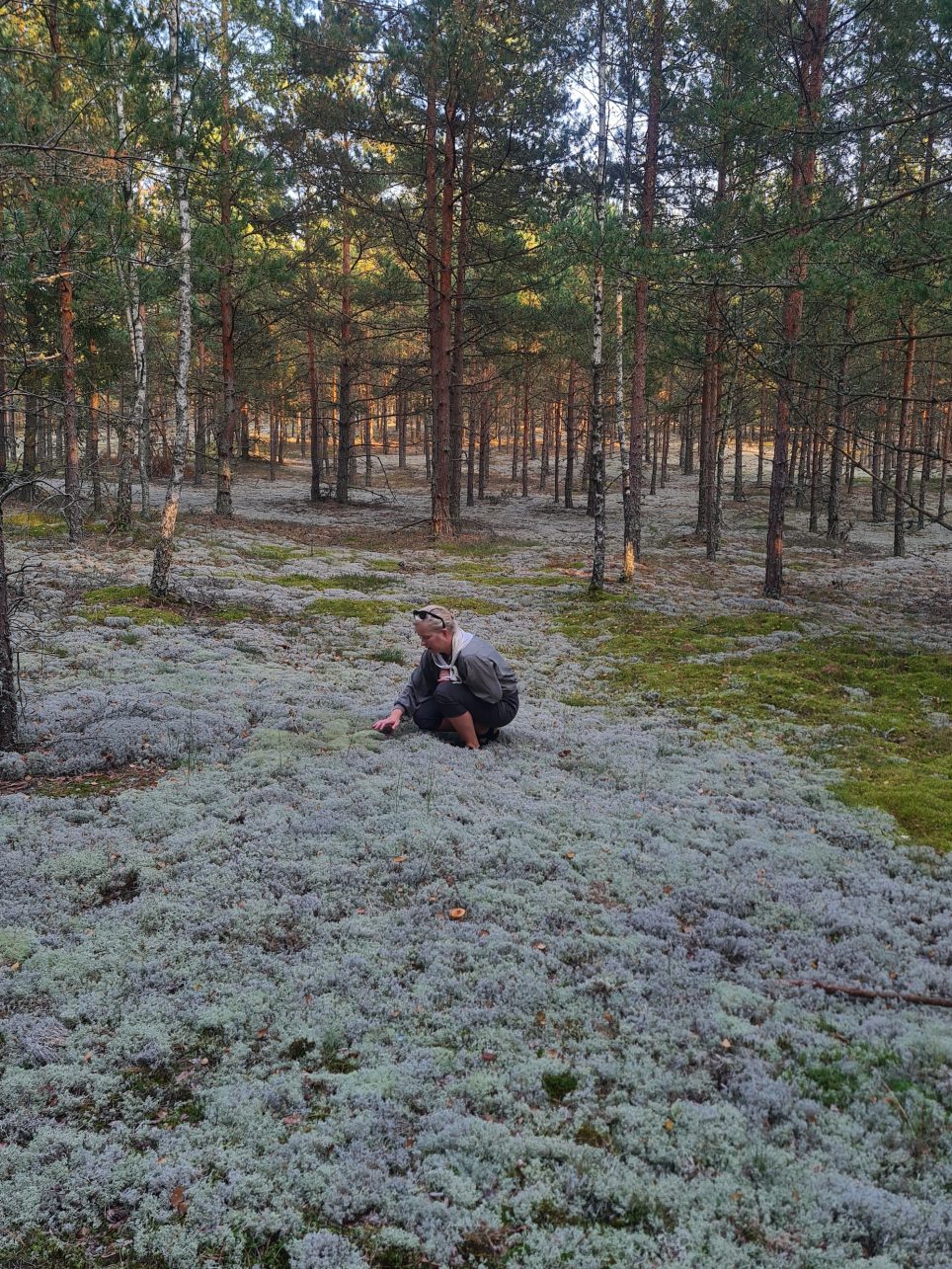
Even the table in Aistė’s studio, where we sit down for a chat, is covered in lichen. In fact, we are surrounded by 3D-printed models. There aren’t many opportunities in Kaunas to print them exactly as she envisions, so she often has to have her creations printed abroad and shipped to her. I muster the courage to touch the one closest to me – it resembles coral. It looks like it would be plush, but it actually feels more like the surface of a house covered in mica. It could be jewelry, a decorative element, or perhaps even a very stylish medical device.
Kaunas
“Look, everyone is in Vilnius, right?” Aistė calmly responds when asked why she lives in Kaunas. Her shift from architecture to lichens happened for a similar reason: she didn’t want to be where everyone else was, “OK, everyone learns from humans, so I’ll learn from somewhere else.” The same applies to cities – it’s interesting to explore other places and potential, rather than always striving for perfection or abundance. The artist feels that places like Kaunas greatly help with focus and concentration. However, in seeking balance, it’s important to always look for opportunities to be in different places where you can grow professionally.
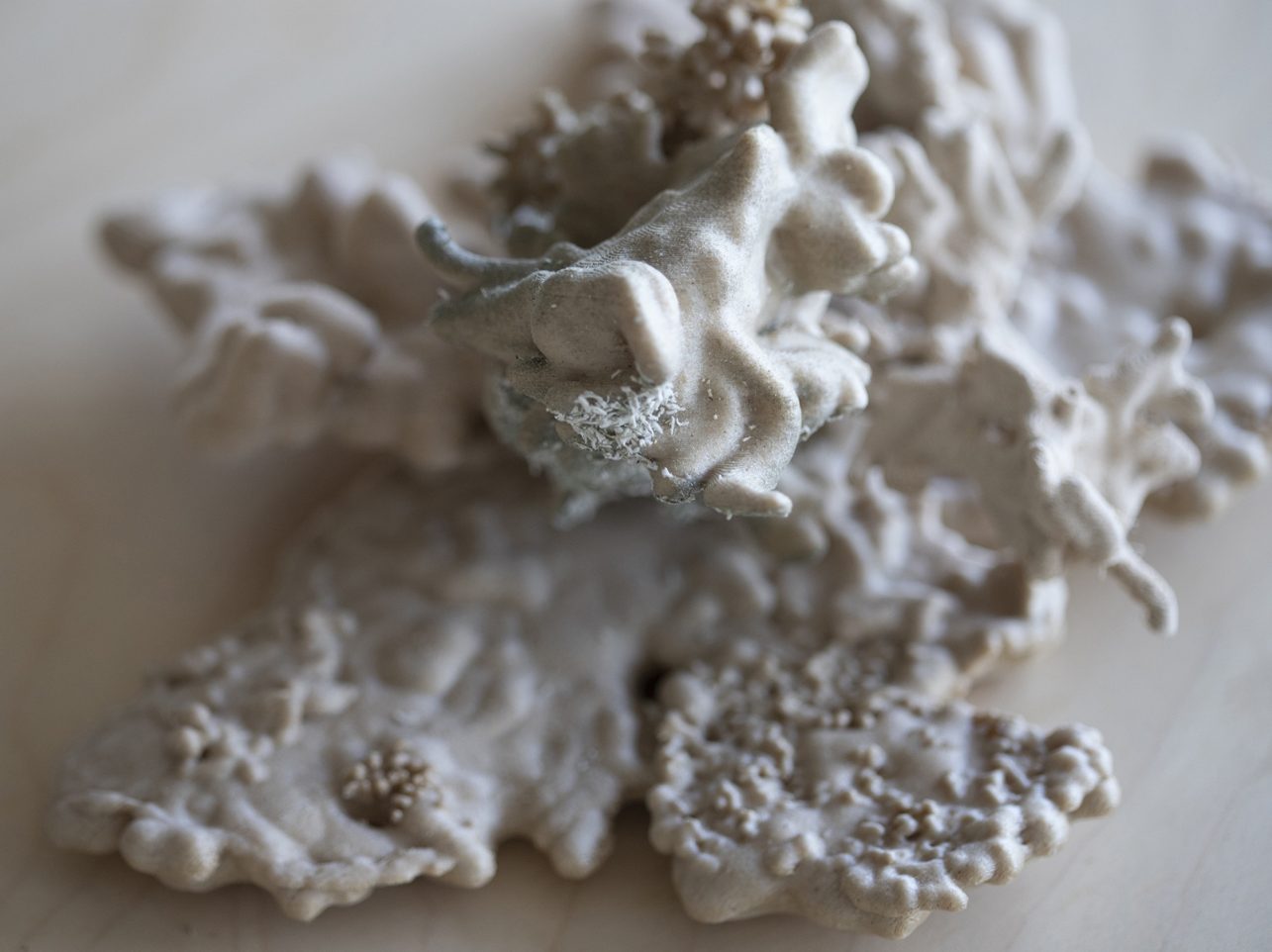
After all her travels and studies, Aistė now lives in Eiguliai, in the same apartment where she grew up. We speak to her in her studio in the center of Kaunas – the balance between work and home is also important. Of course, the world and cities change, so Aistė cherishes her circle of people where she feels safe, “I am happy that this is where my closest people live. They emigrate, they come back… just like me. Kaunas is a safe place for me.”
Between Vienna and Budapest
After studying architecture at Vilnius Gediminas Technical University (Vilnius Tech), Aistė went to Europe in search of a broader approach. In the center of the continent, between Vienna and Budapest, she started what turned into a doctorate in fine arts at the end of last year. She was impressed by the abundance of ornamentation and decoration in the local architecture, “The environment is radically different from Kaunas. Although nature was lacking when I lived there, the architecture visually represented it for me.” My studies in Vienna were also different – more visionary, developing spatial thinking, and giving me the conditions to grow and… play. And Aistė wanted to play. Interestingly, Budapest seemed… lichen-like to her. This was due to the layer of dust that rendered its beautiful buildings invisible and unwanted. “It even seemed to me that those buildings were crumbling, their facades peeling away – all of this created the image of a city covered in lichen,” Aistė recalls. Thus, gradually, without wanting to prove anything to anyone, just for herself, she decided to dive into the visual world of lichens. At the time, while studying technical sciences, this seemed almost like a taboo. And after all, it’s fun to do what’s forbidden – to experiment, to work purely visually, regardless of scale, wandering through the layers you’ve created.
Neringa
Neringa is important to many Lithuanian and foreign creators – it is an ideal place to disconnect and merge with nature. “The climate and geography are particularly suitable for lichen growth,” says Aistė, who likes to return to the peninsula to see the organisms she studies in new ways, in different seasons. Aistė even got stuck in the Nida Art Colony for three months during quarantine. “I needed somewhere to put my thoughts, and it was a very good time to create and observe nature. Surrounded by such abundance and diversity, I realized that I needed to apply for a PhD and articulate the grammar of lichens in exactly this way.”
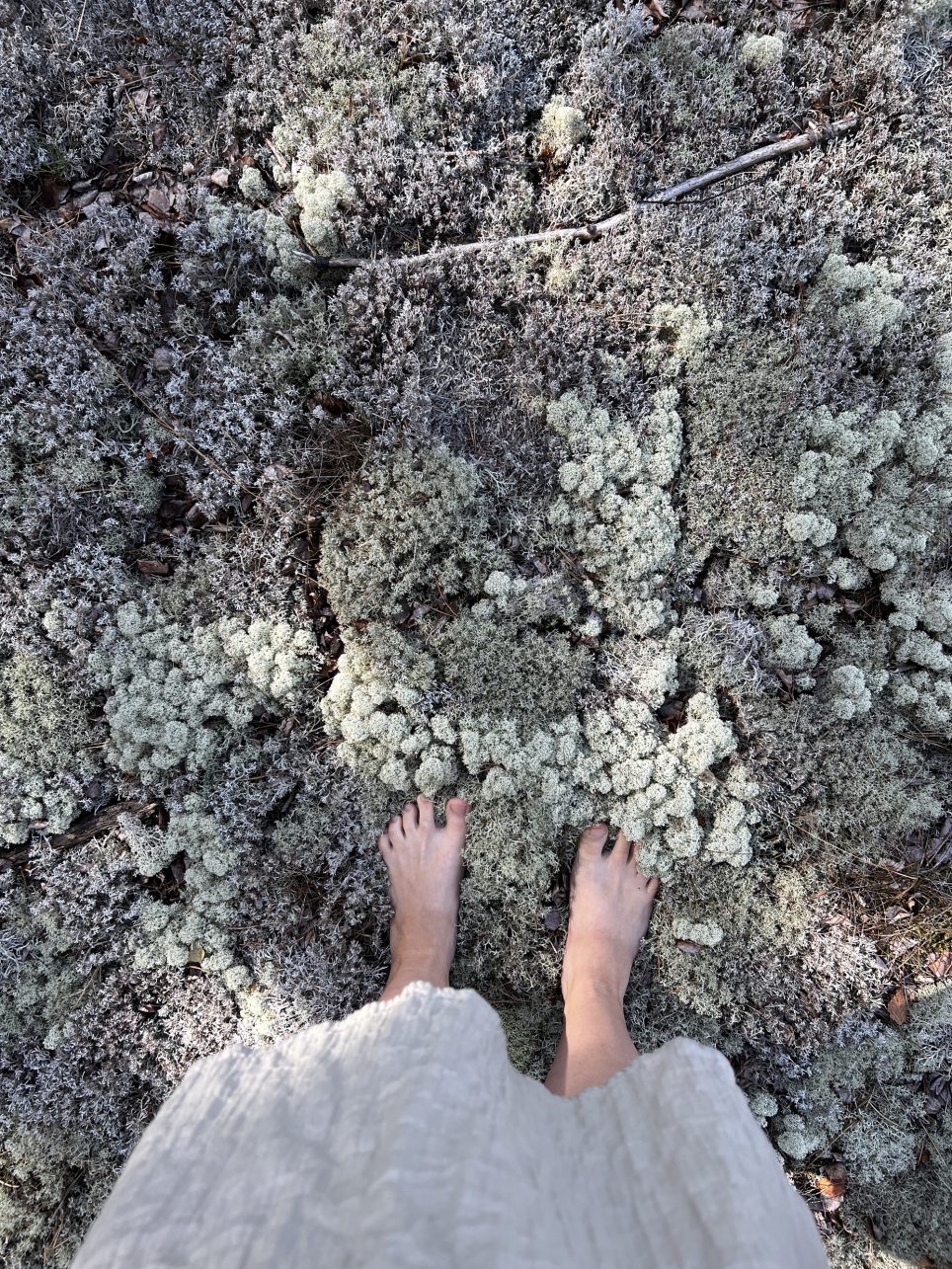
Dzūkija
After spending time in Nida, a month in Kaunas felt… too much for Aistė. She needed to return to nature, the forest, and the lichens. That’s how she ended up in Dzūkija, in the remote Verpėjos residency, founded nearly a decade ago by artist Laura Garbštienė, who also raises sheep. “I had no obligations, and for the first time, I spent so much time in this region, comparing everything to my still-fresh experience in Nida – the landscape, the types of lichens, the attempt to understand the region and its people… It felt like a very romantic beginning as an artist, when you can simply observe, and the forest makes you feel more like yourself than the city does,” she smiles. And indeed, her stories evoke the late 19th century, a time when the world seemed more unknown, and there was more time to explore it. “Yes, but after that came a lot of strange jobs and complex technical challenges,” she adds, quickly dispelling my naive visions.
Finland
Lichens grow everywhere, so Aistė’s explorations of their world are not limited to the borders of Lithuania. She has even visited Finland twice for that reason. Did you know that Helsinki is an archipelago, a scattered city that grows on the same rocks as lichens? The next visit was to the north of Finland, to the old-growth forest where, in Aistė’s words, strange species of lichen grow.
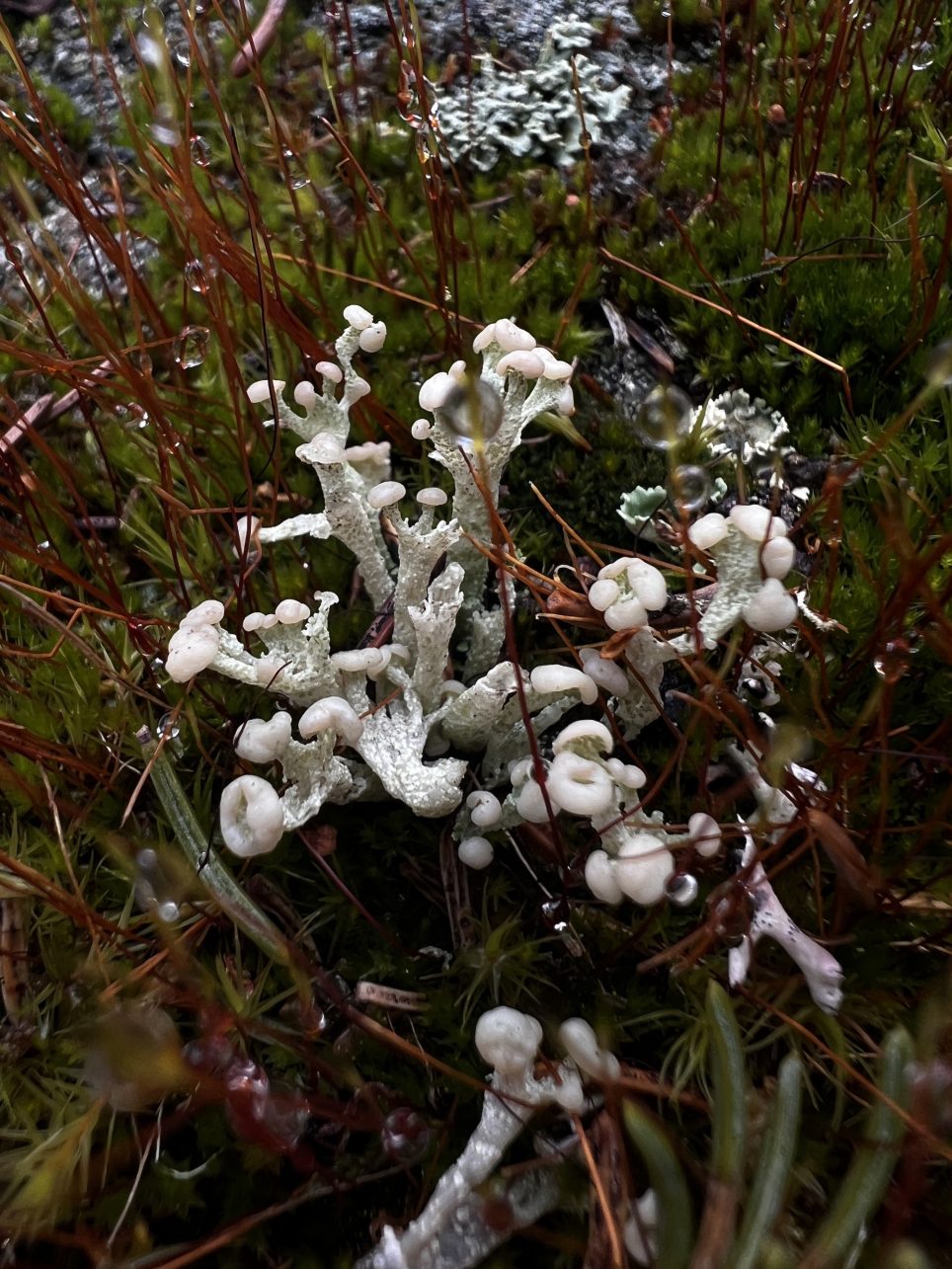
Iceland
When this magazine came out of the printing house, Aistė had already left for Iceland. “Just like architects travel to observe different buildings and cities, I’ve developed a habit of traveling to observe lichens.” In Iceland, she became part of a larger mixed group studying a melting glacier. Even though she had hoped to take a step back from lichens – after all, she had just defended her PhD – it seems unlikely she’ll succeed. How do such trips come about? Like a snowball effect. You participate in one residency, people hear about you and your research, you get invited to a new project, meet more people, end up in a new place, and the cycle continues.
Once again Kaunas
“What I create has nothing to do with Kaunas per se, yet I often find myself in contexts where I present Kaunas – perhaps because there are not many Kaunas artists working more broadly,” says Aistė, when asked if she considers herself a representative of Kaunas art scene. She feels that the minimalism, brutalism, and concrete of Kaunas architecture is the opposite of what is born in her studio. Aistė generates digital lichen (or lichen-like) worlds with various software – the choice is usually determined by the visual factor. Interestingly, she initially used the animation program Cinema 4D for static images, and only later realized that she could make all of this move.

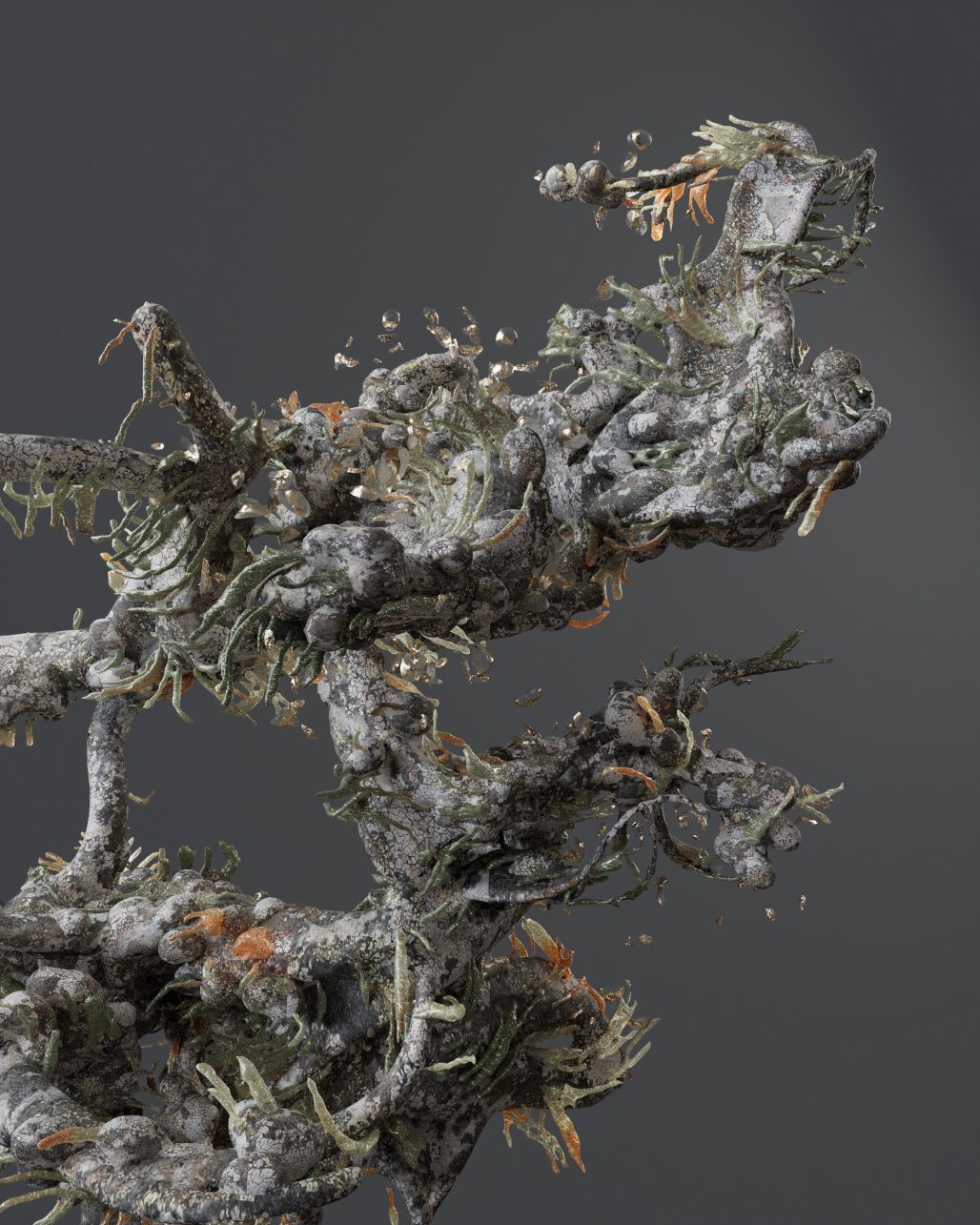
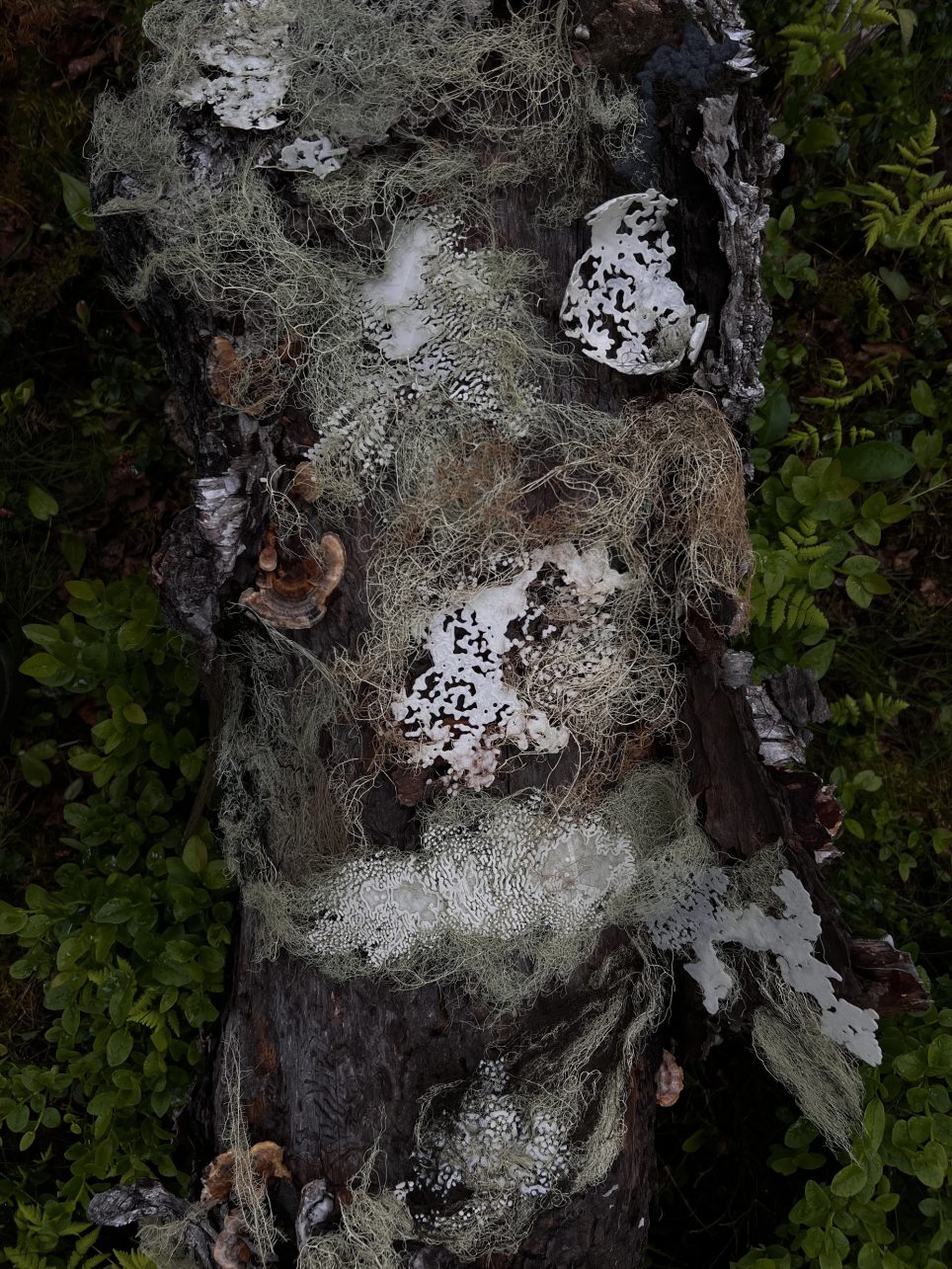
“I’m interested in exploring what’s new in this field, but I don’t have the time. Now that I have my PhD, I have more time, so I’m looking forward to just creating art. I don’t have time to realize everything – my ideas seem to require a big team,” Aistė says. While she is in Iceland, it is difficult to think about an exhibition in Kaunas, but we both agree that it should happen in the near future. It’s been more than five years since the first one, called Architect’s Herbarium and held at Kaunas Artists’ House. And the lichen manifesto, which invites us to feel and not to know, to wander, to be in the margins, to recalibrate our senses and embrace otherness, deserves to be read aloud.
Illustrations and photos by Aistė Ambrazevičiūtė
